
Lavérendrye Park Weekend Canoe Trip
Reservoir Cabonga Loop
August 18,19 2012
There were just Barbara and Bill on this one. It was a
chance to go tripping with our new kevlar canoe. This trip was
suggested by Annie Chamberland. Below is the annotated GPS
tracklog.

We slept at the cottage on
Friday night, as it is half way there. On Saturday morning, we
had trouble getting off of our own road as we spotted a mixed
flock of migrating warblers - Black-throated Blue, Common
Yellowthroat, Northern Parula and Ovenbird. We also heard a
Pileated Woodpecker very close by.
We went via the reserve, and Barbara spotted an Eastern Bluebird
on the Farley Road. We also saw an Eastern Phoebe and a
White-breasted Nuthatch, Turkey Vultures, Mourning Doves and a
Blue Jay.
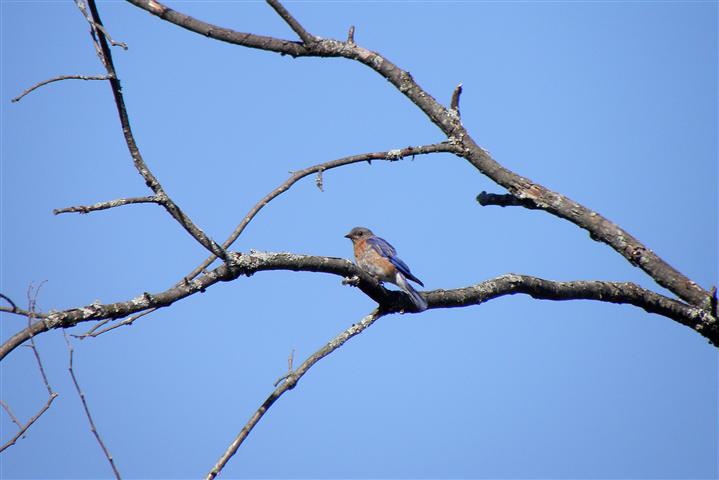
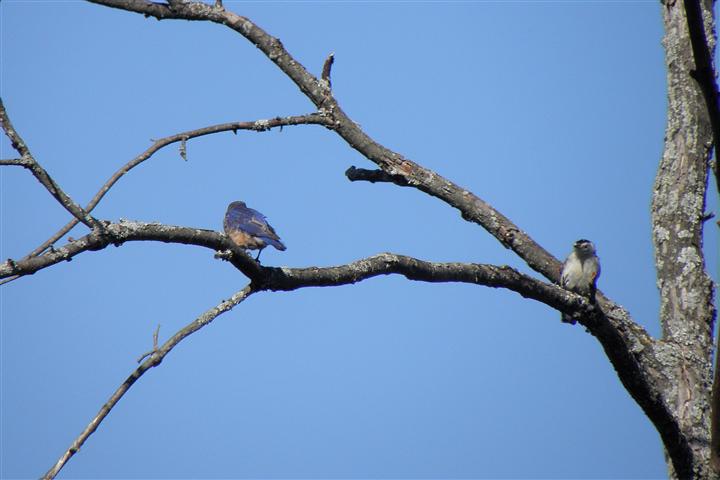
After Grand Remous, we saw a Great Blue Heron, Common Grackle and
a couple of Northern Flickers.
We finally arrived at Le Domaine, picked up our permit and drove
the 5 km to Cabonga 5 where we would begin our trip. We unloaded
the canoe and packed it up with all our gear. Then we sat and had
our lunch. A Ruby-throated Hummingbird zoomed in to check out
Barbara's red jacket.
We moved the van over to the parking lot and Barbara spotted a
hawk in the sky. It went to a perch and Bill ran for his
binoculars. Just as he was focussing, it took off again. It
looked like an accipiter, but something was not quite right.
Cooper's Hawk? No. We were puzzled. It seemed too large for a
Broad-winged Hawk. It was hours later that the realization set in
that it was a Northern Goshawk.
Soon after we were underway, we saw our first loon, a mother with
two small young. It would be the first of 49 adult loons that we
saw along with 6 small young. At one point we saw 13 all
together.
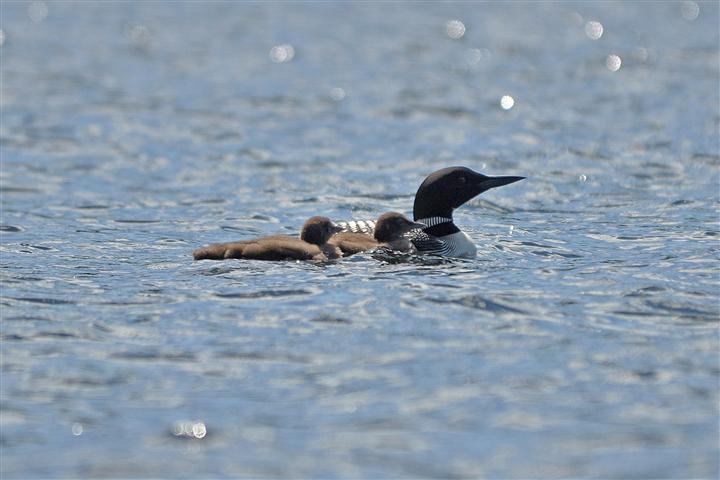
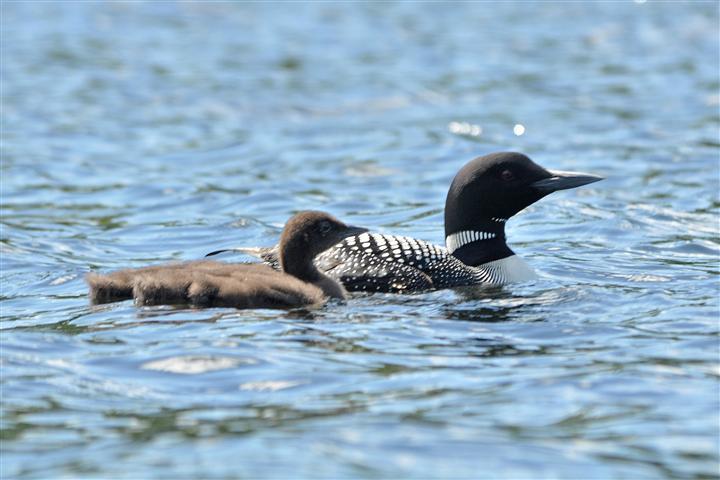
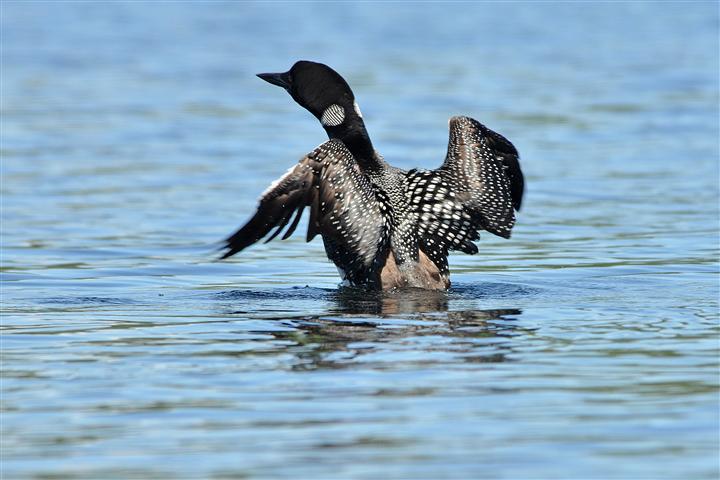
We saw a number of Belted Kingfishers and two Bald Eagles, an
adult and a young bird together. At the campsite that Annie had
put an X on her map, a couple were sitting enjoying the view.
They had no gear in the canoe, but could have been set up farther
back out of sight. The sign did indicate that it was an active
site. These were the only people we saw on the trip except for a
couple of distant fishers.
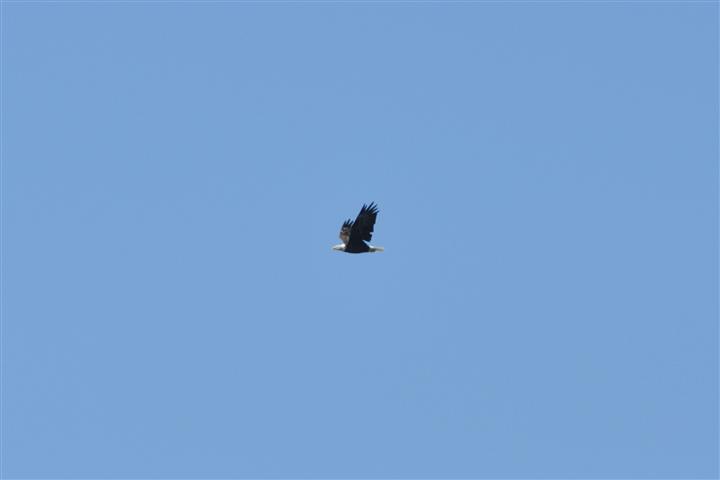
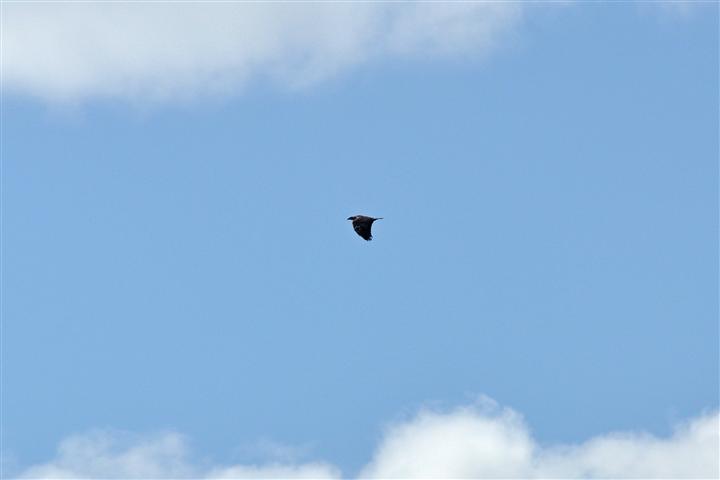
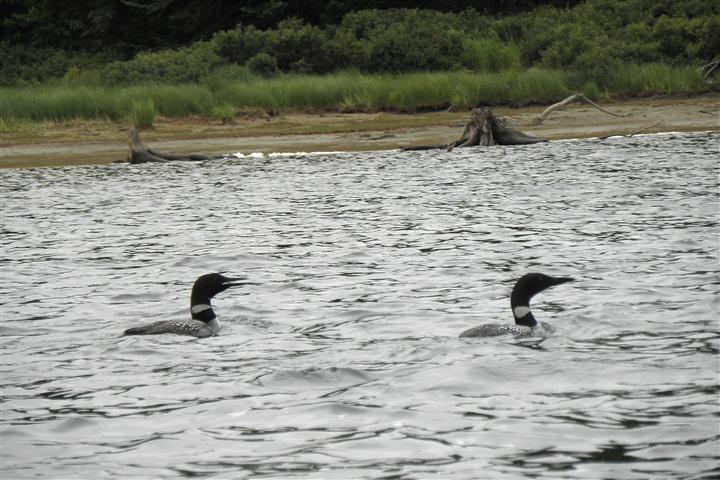
We saw a group of a dozen or more Common Mergansers running along
the surface making lots of splashes.
We came to the 5 m lift over, and found it more like 25 m. The
water would have to be a couple of metres higher to be able to
paddle through; not a chance on this dry year! A couple of
Semi-palmated Sandpipers zoomed in and left just as quickly.
We paddled along side some rather high cliffs and soon came to
Annie's recommended campsite. It was cute and had a great view,
but was really tiny, even for two persons. There was a slightly
larger flat area up the hill. but we did not think it was worth
the bother.
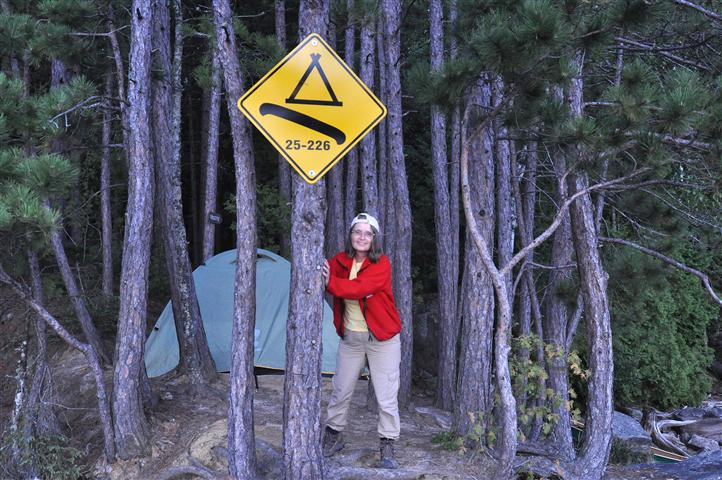
We cooked up our fajitas and enjoyed the sunset. We had a fairly
good night's sleep. Barbara was up early and declared that rain
was coming - the weatherman had goofed yet again.
We cooked our breakfast and packed up just before the rain
started. A Common Raven croaked goodbye to us. It rained all day
with occasional short breaks. On the way out, we saw a
Double-crested Cormorant, many more loons and a rock with a
Herring Gull and a Ring-billed Gull sharing space.
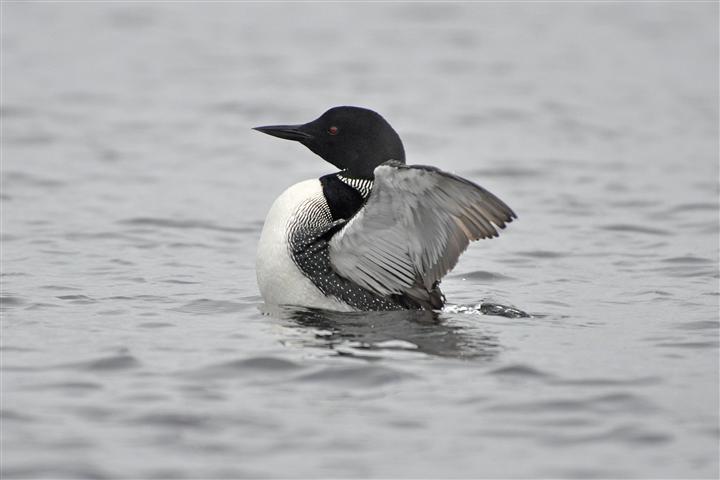
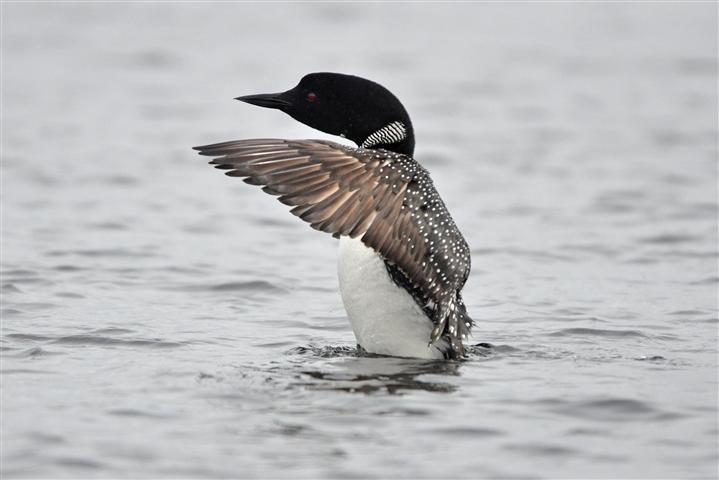
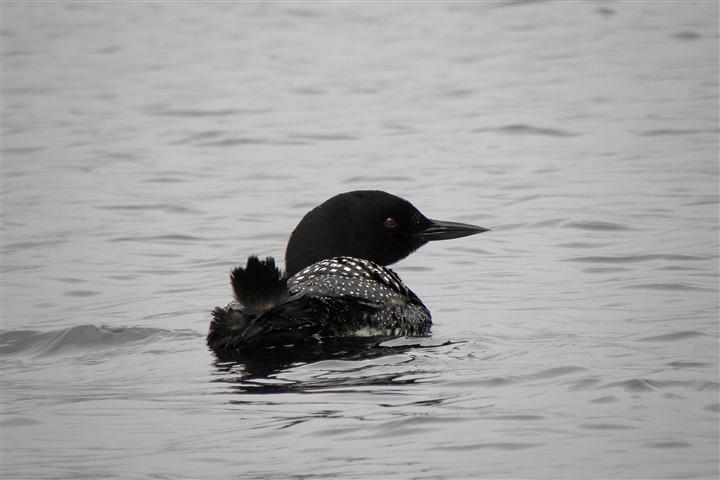
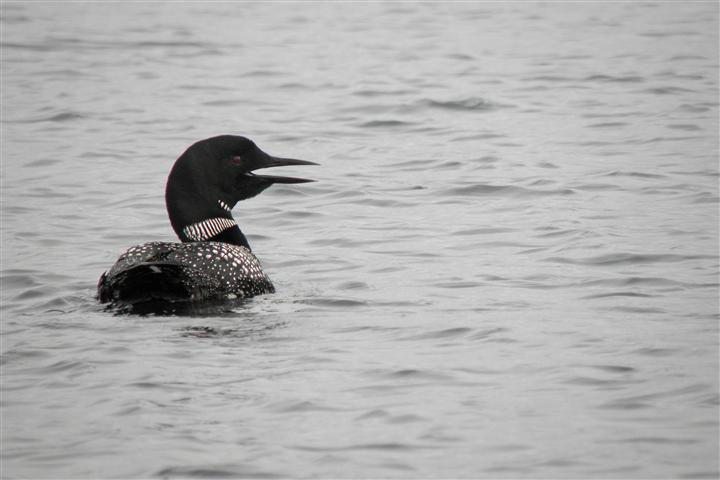
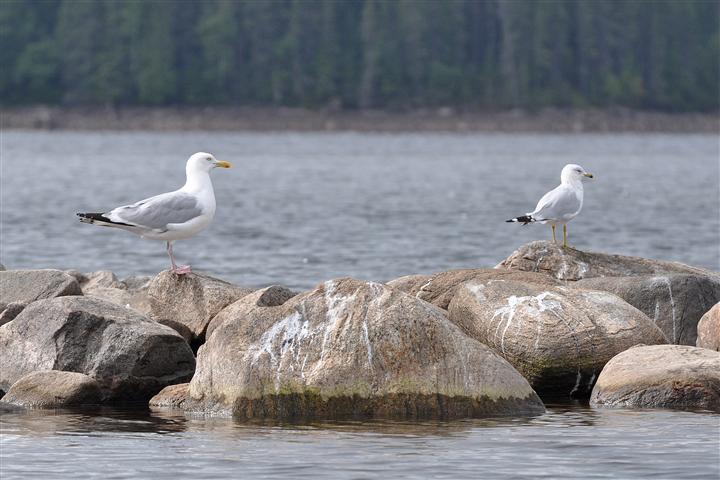
At the portage, we checked out the impassable creek, and saw
three American Black Ducks explode into the air. Both ends of the
portage had very muddy landings. We had no option but to get
dirty.
On the final leg, we noticed some attractive campsites that one
could access without a portage - good for a young family. We
loaded up without incident and drove to Maniwaki, where we
treated ourselves to a milkshake. Then we went on to the cottage
to drop off some gear. We only stayed a few minutes, and headed
home around Blue Sea Lake, where we spotted a flock of Wild
Turkeys in the pouring rain. It continued to rain all the way to
Wakefield, and seemed dry after that.
Our new canoe now had some
scratches - tripping badges of honour.